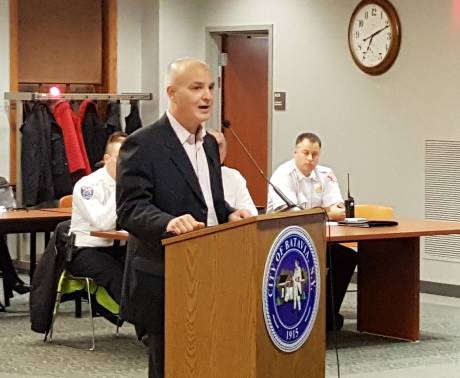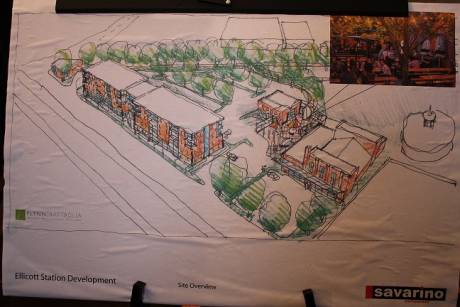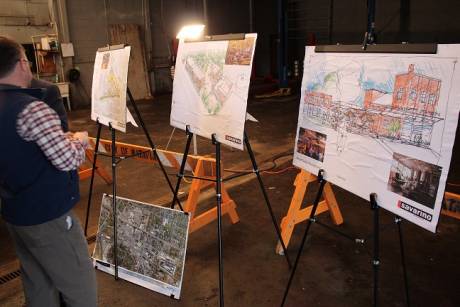Developer: Production brewery, 32 apartments comprise Ellicott Station plan

Speaking from decades of experience in property redevelopment, Samuel Savarino, chief executive officer of Savarino Cos. of Buffalo, acknowledged the challenges involved in converting the former Santy's Tire Sales and Soccio & Della Penna Construction sites on Ellicott Street in the city into a successful commercial venture.
But he also said he is encouraged by the "great public support" locally and is hopeful that New York State comes through with the necessary grant funding to make Ellicott Station a reality.
Savarino, whose company was selected by the Batavia Development Corp. in the spring to revitalize the rundown, three-acre parcel in the city's Brownfield Opportunity Area, joined Julie Pacatte, BDC coordinator, and BDC Board members Ray Chaya and Mary Valle at Monday night's City Council meeting to update the governing body on the project's progress.
"We've been refining our plan, and after finding that one of the buildings on the site is unsafe, it will be demolished and is no longer part of our plans," said Savarino, who has spearheaded award-winning projects along Buffalo's waterfront.
However, he said, the main building on the Della Penna lot (phase 1 of the project) features "some unusual characteristics that will work well ... and will become the signature part of the development. Driving down Ellicott Street, you can't help but notice it."
Specifically, he said the Della Penna building that once was a transformer repair facility has room upstairs for a party area that looks out over the production floor. He said he is "pleasantly surprised" that the building's shape, along with concrete beams and columns, will lend itself to a unique look and feel when completed.
Savarino said his company has been working with engineers and consultants in preparation of possible construction next spring. Plans are contingent on the awarding of an Empire State Development grant -- what Savarino called a "substantial contribution to close the gap" -- for the project, which is expected to cost around $17 million. He and Pacatte said they hope to hear from the ESD in December.
The developer also said that he has applied for new market tax credits to lessen the state's commitment to the project, noting that the fact that the site is in a highly distressed census tract and that Batavia is a rural community work in the project's favor.
He said the project likely will proceed in two phases.
"Della Penna is the first phase; Santy's is the second site," he said, adding that the building there also will come down. "That's the site that the city acquired through foreclosure after we were selected in the RFP process."
Savarino said the plan hasn't changed much from his original vision.
"We're still roughly consistent of what we originally proposed. We're using the existing building as a production brewery and restaurant. We've had some in-depth conversations with two established brewers, both of whom have a strong interest in the site -- I don't think that's an issue.
"We've talked to several commercial tenants for the space -- the two floors of commercial space that we have in both of the buildings. But the first phase would have 16 apartments and the second phase would have 16 apartments, for a total of 32. Commercial space on the first floor could be retail or it could just be commercial office. We've had an awful lot of interest from commercial office users and one bank in particular."
Samuel Savarino talks about the Ellicott Station project at Monday night's City Council meeting. Photo by Mike Pettinella.





